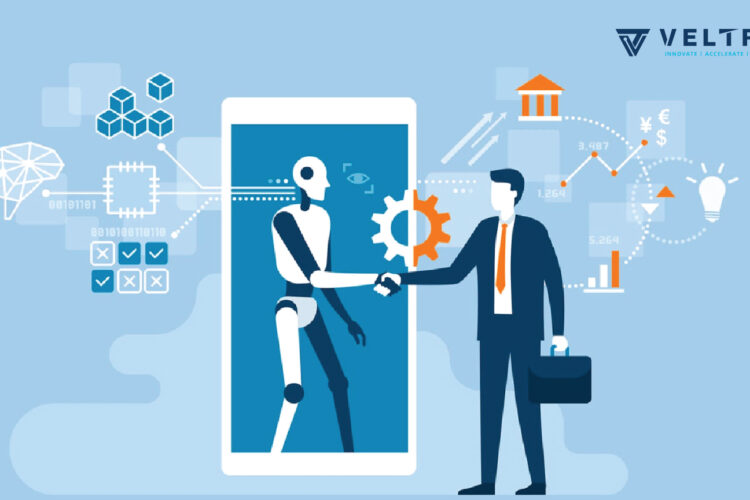
I. Introduction to Personalization and AI
II. Benefits of Personalization and AI in Marketing
III. Challenges of Implementing Personalization and AI
IV. Best Practices for Utilizing Personalization and AI in Business
Introduction to Personalization and AI
Hey there, curious minds! Today, we’re diving into the fascinating world of personalization and artificial intelligence (AI). Imagine a world where every interaction with a brand feels tailor-made just for you. That’s the power of personalization and AI in marketing!
Personalization is all about creating unique experiences for each individual customer based on their preferences, behaviors, and interests. It goes beyond just using someone’s name in an email – it’s about understanding their needs and delivering relevant content and offers at the right time.
Now, pair that with AI, and you’ve got a match made in marketing heaven. Artificial intelligence enables businesses to analyze huge amounts of data in real-time, predict customer behavior, and automate personalized campaigns. It’s like having a super-smart assistant that helps you understand your customers better and engage with them in more meaningful ways.
Personalization and AI are revolutionizing the way businesses connect with their audience. From recommending products based on past purchases to sending targeted emails that resonate with each recipient, the possibilities are endless. It’s like having a secret weapon that helps you stand out in a crowded market and build lasting relationships with your customers.
So, buckle up and get ready to explore the exciting world of personalization and AI. Whether you’re a marketing pro or just starting out, there’s something for everyone in this game-changing technology. Let’s dive in and discover how you can tap into the power of personalization and AI to elevate your business to new heights!
Benefits of Personalization and AI in Marketing
Have you ever received a personalized recommendation on Amazon that made you think, “Wow, they really know me”? That’s the power of personalization and artificial intelligence (AI) in marketing. These tools can revolutionize how businesses connect with their customers, offering a tailored experience that leaves a lasting impression. Let’s dive into some of the key benefits of incorporating personalization and AI into your marketing strategy.
1. Enhanced Customer Experience:
Personalization allows businesses to deliver relevant content to each individual customer based on their preferences, behavior, and past interactions. By leveraging AI to analyze data and predict customer needs, companies can create a more personalized and engaging experience for their audience. This leads to increased customer satisfaction, loyalty, and ultimately, higher retention rates.
2. Improved Customer Engagement:
Through personalization, businesses can send targeted messages to customers at the right time and through the right channels. By using AI to analyze customer data and behavior, companies can understand what resonates with their audience and tailor their marketing efforts accordingly. This leads to higher engagement rates, as customers are more likely to interact with content that is relevant and valuable to them.
3. Increased Conversion Rates:
Personalization and AI can help businesses deliver personalized product recommendations, offers, and promotions to customers based on their preferences and shopping behavior. By presenting customers with relevant and timely offers, businesses can increase the likelihood of conversions and drive sales. This targeted approach not only improves conversion rates but also enhances the overall shopping experience for customers.
4. Data-Driven Decision-Making:
AI enables businesses to analyze vast amounts of customer data in real-time, allowing them to make informed decisions based on actionable insights. By leveraging AI algorithms, businesses can gain a deeper understanding of customer behavior, preferences, and trends, enabling them to optimize their marketing strategies for better results. This data-driven approach helps businesses stay ahead of the competition and adapt to changing market dynamics.
In conclusion, personalization and AI have the potential to transform how businesses engage with their customers, drive sales, and stay competitive in today’s digital landscape. By leveraging these tools effectively, businesses can create a more personalized and engaging experience for their customers, leading to increased satisfaction, loyalty, and ultimately, business success.
Challenges of Implementing Personalization and AI
Implementing personalization and AI in your business can be incredibly beneficial, but it also comes with its own set of challenges that you need to be aware of. Let’s dive into some of the main hurdles you may face when integrating these technologies:
Data Privacy Concerns
One of the biggest challenges with implementing personalization and AI is ensuring that you are handling customer data in a secure and ethical manner. With the increasing focus on data privacy regulations like GDPR, it’s crucial that you are transparent with your customers about how their data is being used and stored. Make sure to prioritize data security and compliance to build trust with your customers.
Lack of Quality Data
Another common challenge is the availability of high-quality data for personalization and AI algorithms to work effectively. Without accurate and relevant data, your efforts to personalize customer experiences may fall flat. It’s essential to invest in data collection and analysis tools to ensure that you have the right information to drive personalized marketing strategies.
Integration with Existing Systems
Integrating new technology like AI into your existing systems can be a complex and time-consuming process. You may encounter compatibility issues, data silos, or resistance from employees who are not familiar with the new tools. It’s important to have a clear implementation plan and provide training to your team to ensure a smooth transition.
Cost and Resource Constraints
Implementing personalization and AI can be a significant investment in terms of both time and resources. From purchasing AI software to hiring data analysts, the costs can add up quickly. It’s essential to carefully evaluate your budget and resources before diving into these technologies to avoid any financial strain on your business.
Overcoming Bias and Algorithmic Fairness
AI algorithms are only as good as the data they are trained on, which means they can inadvertently perpetuate biases present in the data. It’s crucial to regularly monitor and test your AI systems for fairness and inclusivity to avoid unintentional discrimination. Work with diverse teams and experts to ensure that your algorithms are unbiased and ethical.
While implementing personalization and AI in your business may present challenges, overcoming these hurdles can lead to significant benefits for your organization. By taking a proactive approach to address these challenges and incorporating best practices, you can harness the power of these technologies to drive growth and enhance customer experiences.
“`html
Challenges of Implementing Personalization and AI
Implementing personalization and AI in your business can be incredibly beneficial, but it also comes with its own set of challenges that you need to be aware of. Let’s dive into some of the main hurdles you may face when integrating these technologies:
Data Privacy Concerns
One of the biggest challenges with implementing personalization and AI is ensuring that you are handling customer data in a secure and ethical manner. With the increasing focus on data privacy regulations like GDPR, it’s crucial that you are transparent with your customers about how their data is being used and stored. Make sure to prioritize data security and compliance to build trust with your customers.
Lack of Quality Data
Another common challenge is the availability of high-quality data for personalization and AI algorithms to work effectively. Without accurate and relevant data, your efforts to personalize customer experiences may fall flat. It’s essential to invest in data collection and analysis tools to ensure that you have the right information to drive personalized marketing strategies.
Integration with Existing Systems
Integrating new technology like AI into your existing systems can be a complex and time-consuming process. You may encounter compatibility issues, data silos, or resistance from employees who are not familiar with the new tools. It’s important to have a clear implementation plan and provide training to your team to ensure a smooth transition.
Cost and Resource Constraints
Implementing personalization and AI can be a significant investment in terms of both time and resources. From purchasing AI software to hiring data analysts, the costs can add up quickly. It’s essential to carefully evaluate your budget and resources before diving into these technologies to avoid any financial strain on your business.
Overcoming Bias and Algorithmic Fairness
AI algorithms are only as good as the data they are trained on, which means they can inadvertently perpetuate biases present in the data. It’s crucial to regularly monitor and test your AI systems for fairness and inclusivity to avoid unintentional discrimination. Work with diverse teams and experts to ensure that your algorithms are unbiased and ethical.
While implementing personalization and AI in your business may present challenges, overcoming these hurdles can lead to significant benefits for your organization. By taking a proactive approach to address these challenges and incorporating best practices, you can harness the power of these technologies to drive growth and enhance customer experiences.
“`
Best Practices for Utilizing Personalization and AI in Business
So, you’ve decided to incorporate personalization and AI into your business strategy – great choice! But how do you make sure you’re getting the most out of these powerful tools? Let’s walk through some best practices to help you navigate this exciting territory.
1. Understand Your Audience
Before diving into personalization and AI, it’s crucial to have a deep understanding of your target audience. Who are they? What are their preferences and behaviors? By knowing your audience inside and out, you’ll be able to tailor your personalized experiences to meet their specific needs and interests.
2. Use Data Wisely
Personalization and AI thrive on data, so make sure you’re collecting and analyzing it effectively. Utilize customer data platforms to gather valuable insights about your audience’s behavior and preferences. This data will fuel your personalized marketing efforts and help you deliver more relevant experiences.
3. Test and Optimize Continuously
Don’t set it and forget it – personalization and AI require ongoing testing and optimization. Experiment with different personalization techniques, messaging, and AI algorithms to see what resonates best with your audience. By continuously refining your approach, you’ll ensure that your personalized experiences are always improving.
4. Provide Value and Relevance
When implementing personalization and AI, always prioritize providing value and relevance to your audience. Tailor your messaging and recommendations based on their interests and needs, rather than bombarding them with generic content. By delivering personalized experiences that truly resonate with your audience, you’ll build stronger connections and drive better results.
5. Maintain Transparency and Trust
As you leverage personalization and AI in your marketing efforts, it’s essential to maintain transparency and build trust with your audience. Be clear about how you’re using their data and explain the benefits of personalized experiences. By fostering trust and being transparent, you’ll create a more positive and engaging customer experience.
6. Monitor Performance Metrics
Track key performance metrics to measure the success of your personalization and AI initiatives. Monitor metrics like engagement rates, conversion rates, and customer satisfaction to gauge the impact of your personalized experiences. By analyzing these metrics, you can identify areas for improvement and optimize your strategy for better results.
By following these best practices, you’ll be well-equipped to harness the power of personalization and AI in your business. Remember, personalization is not just a trend – it’s a proven strategy for driving customer engagement, loyalty, and growth. So, embrace the possibilities, experiment with new ideas, and watch your personalized experiences transform your business for the better.
“`html
Best Practices for Utilizing Personalization and AI in Business
So, you’ve decided to incorporate personalization and AI into your business strategy – great choice! But how do you make sure you’re getting the most out of these powerful tools? Let’s walk through some best practices to help you navigate this exciting territory.
1. Understand Your Audience
Before diving into personalization and AI, it’s crucial to have a deep understanding of your target audience. Who are they? What are their preferences and behaviors? By knowing your audience inside and out, you’ll be able to tailor your personalized experiences to meet their specific needs and interests.
2. Use Data Wisely
Personalization and AI thrive on data, so make sure you’re collecting and analyzing it effectively. Utilize customer data platforms to gather valuable insights about your audience’s behavior and preferences. This data will fuel your personalized marketing efforts and help you deliver more relevant experiences.
3. Test and Optimize Continuously
Don’t set it and forget it – personalization and AI require ongoing testing and optimization. Experiment with different personalization techniques, messaging, and AI algorithms to see what resonates best with your audience. By continuously refining your approach, you’ll ensure that your personalized experiences are always improving.
4. Provide Value and Relevance
When implementing personalization and AI, always prioritize providing value and relevance to your audience. Tailor your messaging and recommendations based on their interests and needs, rather than bombarding them with generic content. By delivering personalized experiences that truly resonate with your audience, you’ll build stronger connections and drive better results.
5. Maintain Transparency and Trust
As you leverage personalization and AI in your marketing efforts, it’s essential to maintain transparency and build trust with your audience. Be clear about how you’re using their data and explain the benefits of personalized experiences. By fostering trust and being transparent, you’ll create a more positive and engaging customer experience.
6. Monitor Performance Metrics
Track key performance metrics to measure the success of your personalization and AI initiatives. Monitor metrics like engagement rates, conversion rates, and customer satisfaction to gauge the impact of your personalized experiences. By analyzing these metrics, you can identify areas for improvement and optimize your strategy for better results.
By following these best practices, you’ll be well-equipped to harness the power of personalization and AI in your business. Remember, personalization is not just a trend – it’s a proven strategy for driving customer engagement, loyalty, and growth. So, embrace the possibilities, experiment with new ideas, and watch your personalized experiences transform your business for the better.
“`










Comments